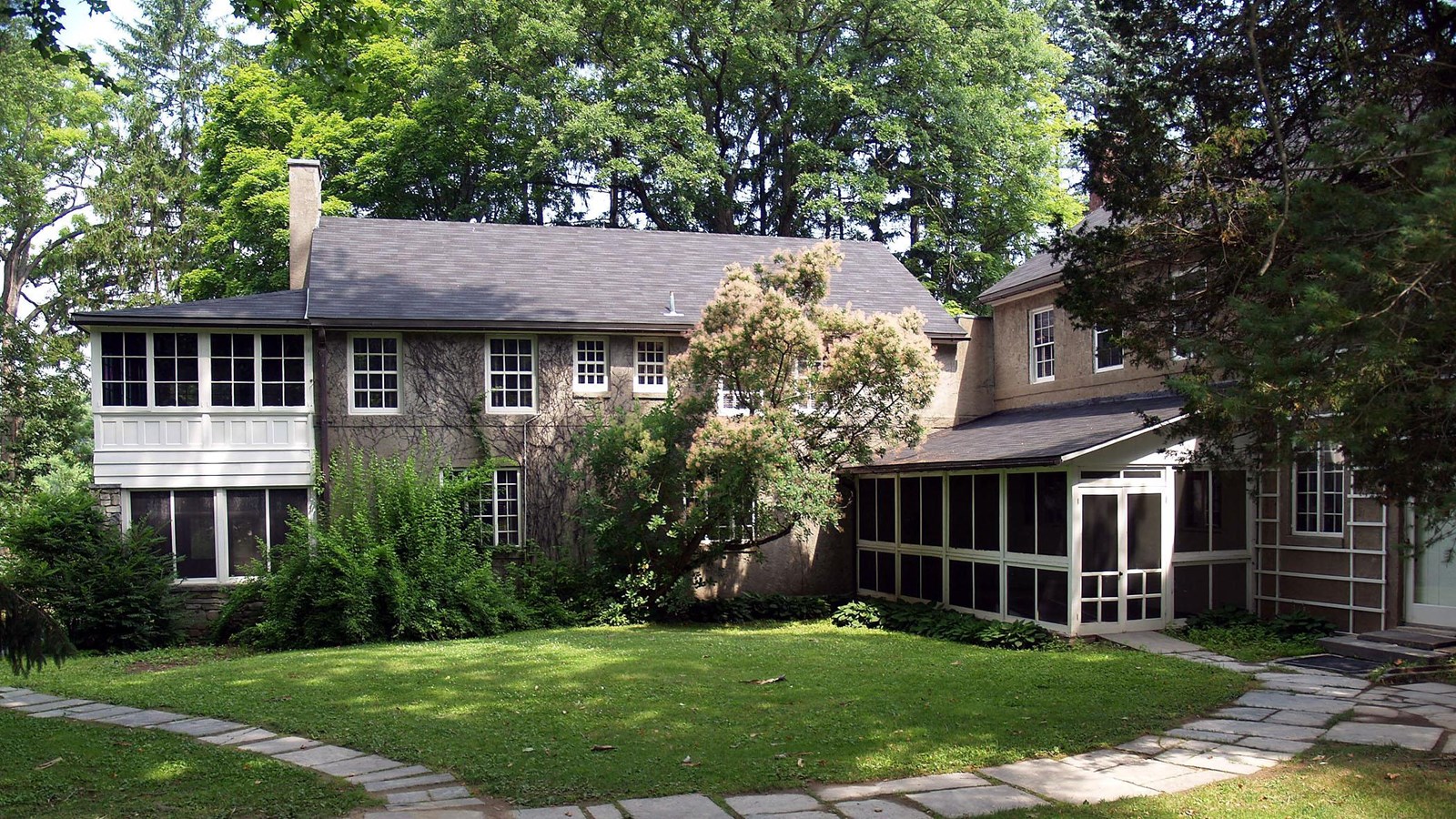Last updated: February 19, 2025
Place
Val-Kill

NPS/W.D. Urbin
Braille, Parking - Auto, Picnic Table, Restroom - Accessible, Wheelchairs Available
The wife of a rising political star, Eleanor Roosevelt emerged during the 1920s as a major leader in her own right. Val-Kill, built during this time, was central to her development and today is the place where we honor her life and legacy.
Originally purchased by FDR in 1911, Val-Kill became a favorite family picnic site. In 1924, Eleanor and her friends Nancy Cook and Marion Dickerman built a cottage they could share to enjoy the country year-round. Construction began in 1925 and was completed the following year. At the same time, they built an adjacent factory for Val-Kill Industries to demonstrate how a revival of handicraft traditions could support local economies. The Industries employed furniture makers, finishers, metal crafters, and weavers producing a range of goods for the retail market. Under financial stress brought about by the Great Depression, Val-Kill Industries would close just ten years later in 1936. At that time, Eleanor Roosevelt converted the factory into a residence for her separate use.
Following FDR’s death in 1945, Val-Kill became Eleanor Roosevelt's primary home. At Val-Kill, she surrounded herself with family and friends and hosted individuals who shared her diverse interests, including national and world leaders, activists, students, and local youth and students.
Other important structures at Val-Kill are the Stable-Garage, the Doll House, the Playhouse, and the swimming pool. The Doll House is a small wooden structure, originally located near the FDR Home and moved to Val-Kill by Eleanor Roosevelt in 1945 for the use of her grandchildren. The Playhouse, a one-story frame building, was built in several phases beginning in 1928 and was adapted for various uses, including a forge and metal-working shop for Val-Kill Industries.
Eleanor Roosevelt loved the beauty and tranquility of the Val-Kill landscape, characteristics that endure today. Val-Kill Pond, a dammed section of the Fall Kill, is a central feature around which the main buildings, Stone Cottage and Val-Kill Cottage, are arranged. Lawns, gardens, and woodlands.
FDR's forest plantations surround the setting, including a large white pine plantation set out by FDR in 1914 known as the “Secret Woods.” It is said to be where Eleanor Roosevelt read stories to her grandchildren. In addition, the remains of several plantations survive, including white cedar, tulip tree, and Scotch pine plantations set out as experimental plots by the New York State College of Forestry. The agricultural context of Val-Kill remained important throughout Eleanor Roosevelt’s life, and she actively sought to continue it after FDR’s death, when she and her son Elliott launched Val-Kill Farms.
Although most of the furnishings and her personal possessions were dispersed following Eleanor Roosevelt’s death, the National Park Service has since acquired many of the original historic furnishings associated with the cottage. The house is furnished much the way Eleanor Roosevelt left it. Knotty pine paneled rooms with cozy upholstered chairs and sofas, handcrafted Val-Kill Industries furniture, family photographs, and personal memorabilia offer a glimpse of the personal side of an outstanding American woman.
